Types of mountain bike trails
Mountain biking is a thrilling and adventurous sport that can take you to amazing places. But not all mountain bike trails are the same. There are different types of mountain bike trails that suit different levels of skills, preferences, and goals. In this post, we will explore some of the most common types of mountain bike trails and what they offer to riders.
Cross-Country Trails
Cross-country trails are among the most popular and accessible types of mountain bike trails. They are usually marked and maintained by local authorities or organizations, and they cover a variety of terrain and difficulty levels. Cross-country trails are designed to test the rider’s endurance, speed, and technical skills, as they often involve climbing, descending, and navigating obstacles. Cross-country trails can range from easy and smooth to hard and rocky, depending on the location and the trail rating system.
Some types of mountain bike trails of cross-country:
- [The Flume Trail] in Nevada, USA: This trail is famous for its stunning views of Lake Tahoe and the surrounding mountains. It is a 13-mile (21 km) one-way trail that climbs up to 7,100 feet (2,164 m) above sea level. The trail is mostly smooth and flat, but it has some steep sections and narrow edges that require caution.
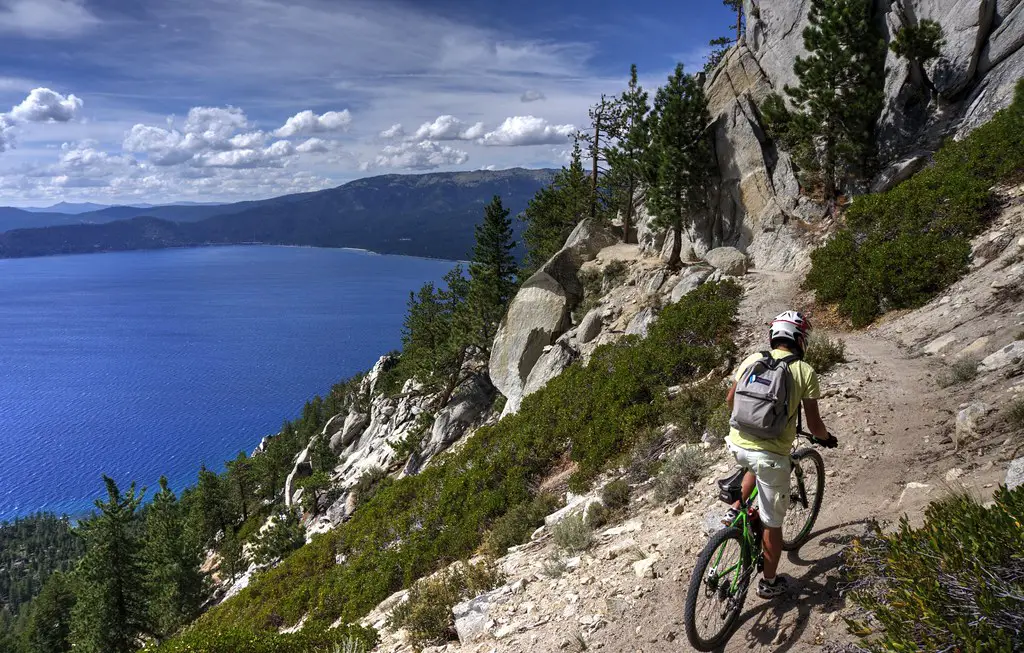
- [The 401 Trail] in Colorado, USA: This trail is one of the most scenic and challenging cross-country trails in the world. It is a 14-mile (23 km) loop that starts at 9,600 feet (2,926 m) and reaches a peak elevation of 11,200 feet (3,414 m). The trail features a long and steep climb, followed by a fast and fun descent through alpine meadows and forests.
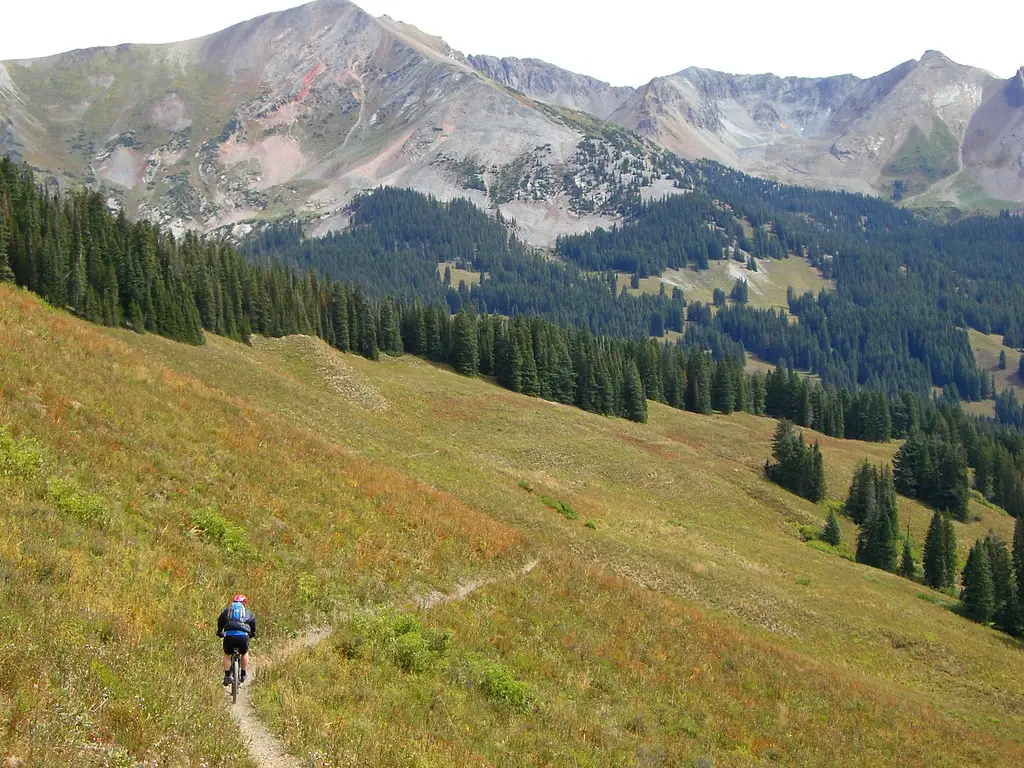
- [The Dragon’s Back Trail] in Wales, UK: This trail is part of the Brechfa Forest Trail Centre, which offers a variety of trails for all levels of riders. The Dragon’s Back Trail is a 19-mile (31 km) loop that takes riders through ancient woodlands, open moorlands, and rocky ridges. The trail is rated as black (expert), as it has some steep climbs, tight turns, and technical sections.
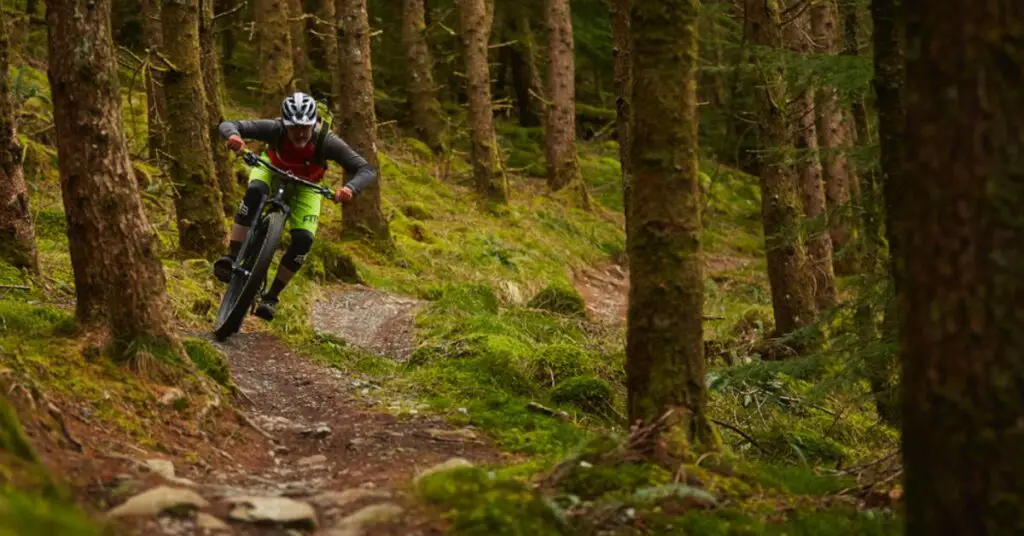
Downhill Trails
Downhill trails are the opposite of cross-country trails. They are designed for riders who love speed, adrenaline, and gravity. Downhill trails are usually located at ski resorts or bike parks, where riders can use chairlifts or shuttle buses to get to the top of the hill.
These trails are marked and graded by difficulty, from green (easy) to double black diamond (extreme). Downhill trails are very steep, rough, and full of jumps, drops, berms, and other features that challenge the rider’s courage and skills. Downhill trails require specialized bikes with full suspension, disc brakes, and protective gear.
Some types of mountain bike trails of downhill:
- [Whistler Bike Park] in British Columbia, Canada: This is the most famous and largest bike park in the world, with over 200 km of downhill trails for all levels of riders. The park has four zones: Fitzsimmons Zone, Garbanzo Zone, Creekside Zone, and Peak Zone. Each zone has its own character and style, from smooth and flowy to steep and gnarly.
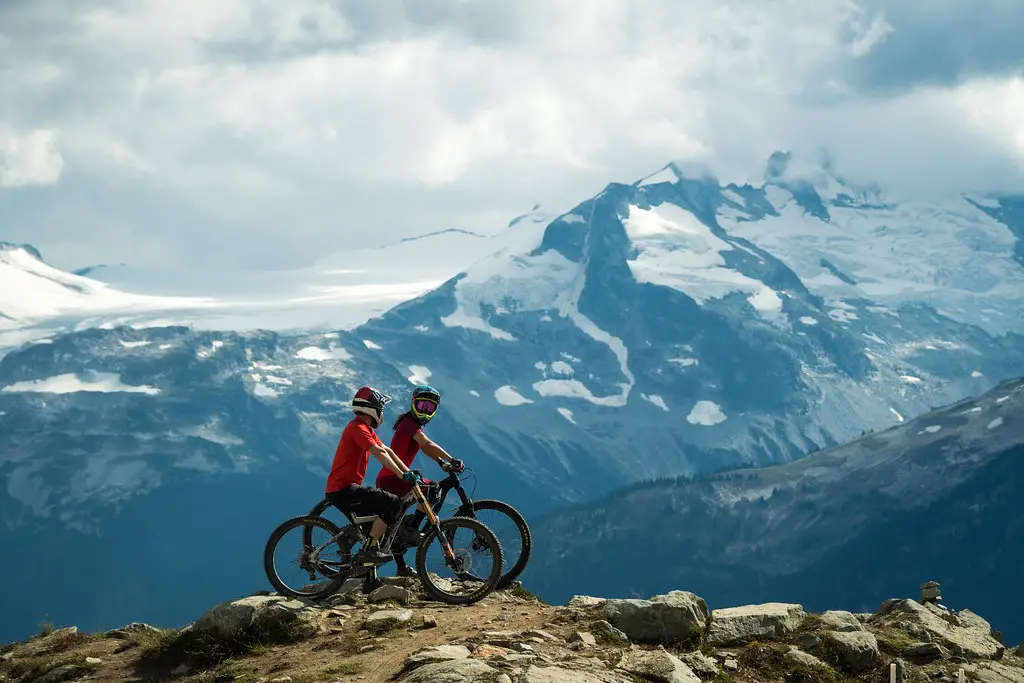
- [Fort William Downhill] in Scotland, UK: This is one of the most iconic and challenging downhill trails in the world. It is the venue for the UCI Mountain Bike World Cup since 2002. The trail is 2.8 km long and drops 555 m in elevation. The trail features rocky sections, jumps, drops, roots, bridges, and a spectacular finish line in front of a cheering crowd.
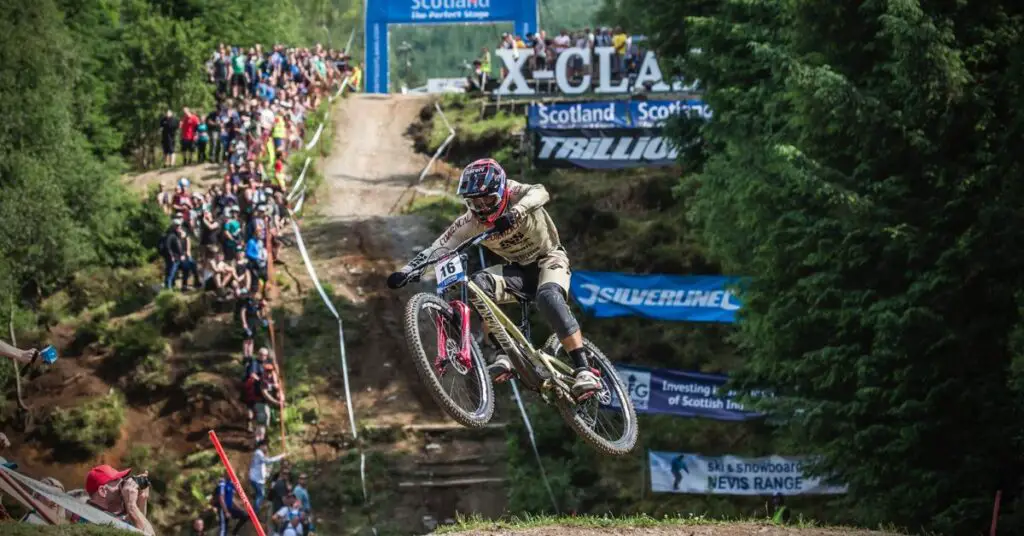
- [Valparaiso Cerro Abajo] in Chile: This is one of the most unique and extreme downhill races in the world. It takes place every year in the city of Valparaiso, where riders race down the narrow streets, stairs, alleys, and rooftops of the urban landscape. The race is 2 km long and has an elevation drop of 255 m. The race attracts thousands of spectators and some of the best downhill riders in the world.

Read more from Bicycle Ninjaa: best mountain bike travel case
Freeride Trails
Freeride trails are similar to downhill trails, but they are more focused on creativity, style, and fun. Riders themselves build these trails, using natural or artificial features to create jumps, drops, stunts, and lines that allow them to express themselves on their bikes. They can find freeride trails in bike parks, forests, deserts, and even urban areas. Riders who want to ride freeride trails need strong, agile, and versatile bikes, as well as skills, daring, and adventurous spirit.
Some examples of freeride trails are:
- [Red Bull Rampage] in Utah, USA: This is the most prestigious and extreme freeride event in the world. It takes place every year in the desert of Virgin, Utah, where riders have to build their own lines on the steep and rugged terrain. The event is judged by the difficulty, style, and execution of the riders’ runs. The event is also very dangerous, as riders face the risk of serious injuries or even death.

- [North Shore Trails] in British Columbia, Canada: This is where the freeride movement started in the 1990s. The trails are located on the mountains near Vancouver, where riders built wooden structures such as bridges, ladders, ramps, and teeter-totters to overcome the wet and slippery terrain. The trails are known for their technicality, difficulty, and innovation.
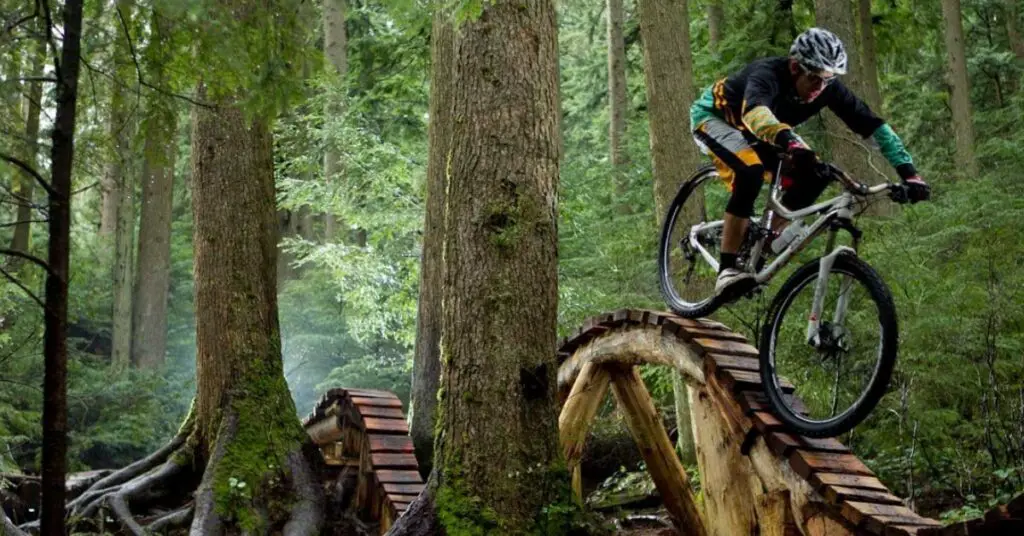
- [La Poma Bike Park] in Barcelona, Spain: This is one of the best bike parks in Europe for freeride and dirt jump enthusiasts. The park has over 100 jumps and features for all levels of riders, from beginners to pros. The park also hosts events and competitions, such as the Red Bull Holy Bike, where riders have to ride four different disciplines: downhill, enduro, slopestyle, and dual slalom.

Enduro Trails
Enduro trails are a mix of cross-country and downhill trails. Many riders who enjoy both climbing and descending choose these bikes. Enduro trails are usually part of a race format, where riders have to complete a series of timed downhill stages and untimed uphill stages. The winner is the rider who has the fastest combined time on the downhill stages. Enduro trails can vary in length, difficulty, and terrain, depending on the location and the event. Enduro trails require bikes that are light enough to climb efficiently, but strong enough to handle rough descents.
Some examples of enduro trails are:
- [Enduro World Series] (EWS): This is the most prestigious and competitive enduro series in the world. It consists of eight rounds in different countries, where riders have to race on diverse and demanding trails. World-class mountain bikers and amateurs challenge themselves in the series.

- [Trans Provence] in France: This is one of the most epic and adventurous enduro events in the world. It is a six-day stage race that covers over 300 km and 15,000 m of elevation gain across the French Alps. Riders experience the best of Europe’s natural beauty, from snow-capped peaks to azure seas
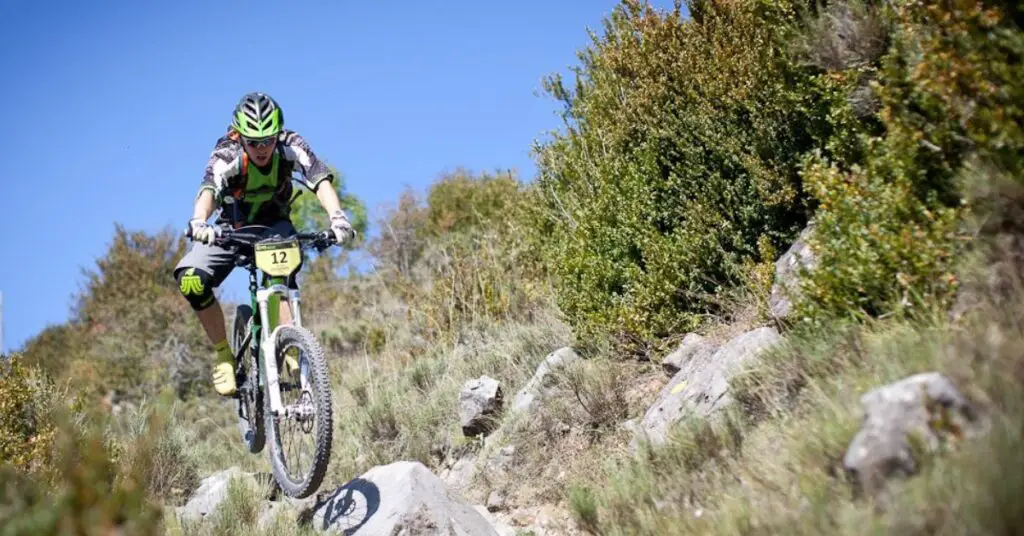
- [The Whole Enchilada] in Utah, USA: This is one of the most famous and fun enduro trails in the world. It is a 26-mile (42 km) trail that descends from 10,600 feet (3,231 m) to 4,000 feet (1,219 m) in elevation. The trail offers a variety of terrain and scenery, from alpine meadows and forests to slickrock and canyons.
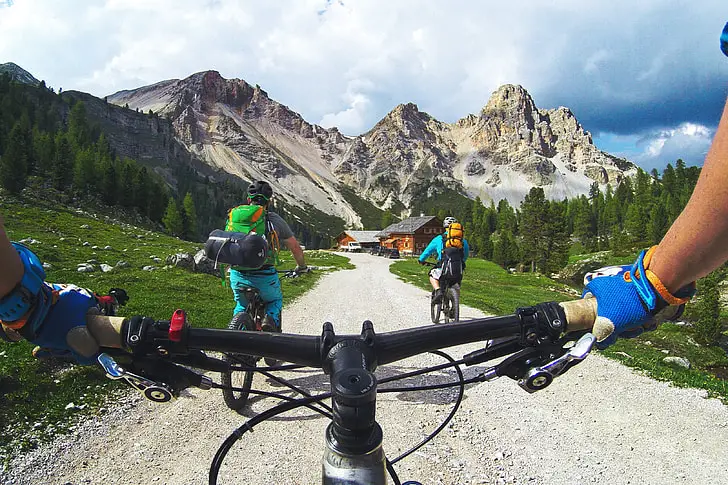
Conclusion
Mountain bike trails are not all the same. There are different types of mountain bike trails that suit different levels of skills, preferences, and goals. Whether you prefer cross-country, downhill, freeride, or enduro trails, there is a trail for you out there. All you need is a bike, a helmet, and a sense of adventure.
Happy riding!








3 Comments